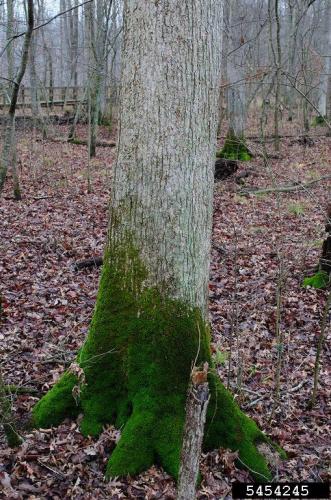Play in the dirt!
Know how to check your soil texture when planting trees.

Although Arbor Day was a few weeks ago, it’s still not too late to consider planting a tree. May typically has enough rain and moderate temperatures to allow a transplanted tree to “settle in” to its new surroundings before summer’s hot, dry conditions hit.
Choosing a tree species can be overwhelming, since there are so many different species available. Many big-box home improvement stores, and even grocery stores, have potted trees stacked at their entrances, and it may be tempting to just grab one that seems to have pretty flowers or otherwise interesting foliage. Before taking advantage of that convenience, however, take a moment to think about the tree’s new “home.”
There are many factors that can affect the survival of a transplanted tree, including available sunlight, soil Ph and drainage, climate, and growing space—both above- and below-ground. See the Arbor Day Foundation webpage for more tips.
For a transplant that is just getting established, getting just the right amount of water is especially critical. A new tree needs regular, deep watering for its first two years as the roots extend into the surrounding soil.
Soil texture is one important factor in knowing how much water will be available as the tree grows. Texture refers to the general size of the soil particles, and is divided into three overall classifications: sand, silt and clay. Sand has relatively large particles, while clay soil particles are the smallest, and silt is between sand and clay. Generally speaking, smaller soil particles can hold a greater amount of water. Thankfully, we don’t need to get out a ruler or microscope to actually measure particle size. It’s simple and fun to determine soil texture merely by feel. Take these quick and easy steps:
- Gather two or three tablespoons of soil that are free of roots or other plant debris into your hand.
- Add enough water (in small amounts) to make it feel like moist putty.
- Squeeze the ball of damp soil. Does it remain in a ball?
- If it doesn’t, it’s probably sand.
- If it does, squeeze the ball of soil between thumb and forefinger, pushing with the thumb to try and form a ribbon. Allow the ribbon to drape over the forefinger as it forms. Does it form a ribbon?
- If it doesn’t, it’s a loamy sand.
- If it does, how long does the ribbon get before it breaks? The longer the ribbon that can be made, the more clayey the soil is.
(Go to the “Soil Texture By Feel Flow Chart,” created by Oregon State Extension, for more detailed descriptions.)

Swamp white oak (Quercus bicolor) doesn’t mind getting its roots wet in clay soils. Photo by Vern Wilkins, Indiana University
Knowing the general amount of sand, silt and clay in the soil can be one step to help determine what type of trees can grow there. Species that can tolerate a little drought stress can grow in sandy soils, since sands don’t hold water as long as silty or clayey soil. Jack and red pine, as well as black oak and honeylocust, can grow in these drier conditions. At the opposite end of the spectrum, trees that can tolerate having their roots occasionally saturated in water will survive in more clayey soil. Common native trees that can grow in these more “poorly drained” soils are hickories, northern white-cedar, basswood, willow and swamp white oak. For other ideas, refer to the Michigan State University Extension bulletin Going Native with Michigan Trees.
Knowing other soil characteristics, such as pH and nutrient availability, are also very helpful when selecting a tree species. There are over-the-counter testing kits available at most garden centers, or visit the MSU Soil Test website for instructions on how to mail in a sample of soil for analysis.
Of course, there are many other factors to consider when choosing a new tree for transplanting. Understanding what’s below ground is a first step in making sure your new “resident” will thrive for years to come.



 Print
Print Email
Email




